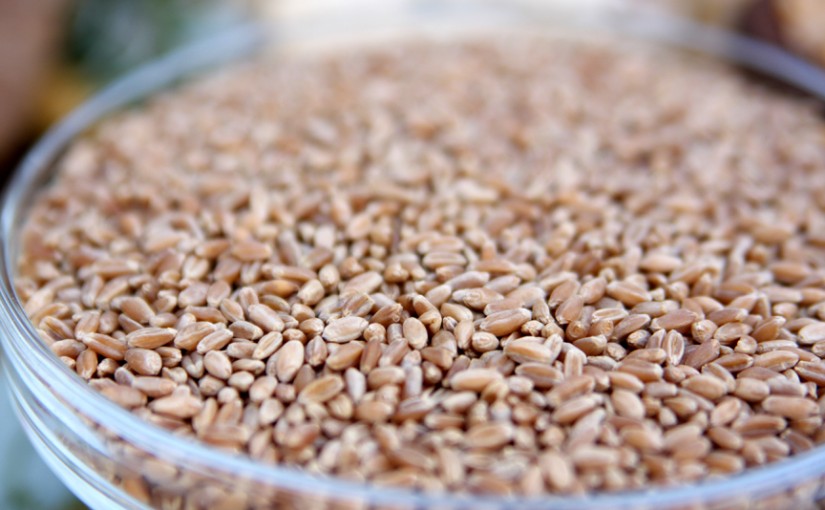by Sue Becker
Wheat is the world’s most important grain crop. Wheat is important not only for its nutritional value, but also for its gluten content. Gluten is the protein of the wheat which, when properly developed by kneading, will trap and hold the yeast gas in the bread dough causing the bread to rise. Wheat is the only grain with the proper amount of gluten to facilitate the rising of bread dough to make light, soft loaves.
There are two basic categories of wheat, hard wheat and soft wheat. Hard wheat is grown in cool, dry climates, either in the winter or the spring. Dry winters and springs make the protein, or gluten, content high, and the moisture content low. A high gluten content is necessary to make yeast breads. Hard wheat is named for the season it is grown (i.e. hard winter wheat or hard spring wheat).
Soft wheat, known as pastry flour, can not be used for making yeast breads. It is grown in wetter regions or is irrigated. The moisture content is high, making the gluten content too low for the proper rising of yeast breads. It is excellent for making cakes, cookies, or, pastries. The wheat grown in southern states is soft wheat, which probably explains why the South was known for its biscuits and cornbread, while the cold northern states had yeast bread.
There are also two varieties of wheat, red or white. These can be grown in the winter or the spring. Red wheat is typically much more flavorful, having that distinctive “nutty” whole wheat taste. White wheat, on the other hand, is very mild in flavor and a light golden color when baked, hence the name, Golden 86, for one white wheat variety.
I generally prefer the full flavor of the red wheat for most of my bread baking. I do, however, prefer the milder flavor of the white wheat for pizza crust or breads filled with onions, herbs, meat, or cheese. I have specified in the recipes which variety of wheat I use if I have a preference.
Durum wheat is used for making pasta. Semolina is flour made from durum wheat with the bran and germ removed.
Wheat ranks first among the grains for its nutritional value. Wheat is an excellent source of fiber and many critical B-vitamins when used in its entirety, including the bran, germ, and endosperm. Wheat germ is one of the richest sources of vitamin E if used when freshly milled, before oxidation takes place.
DISCLAIMER: Nothing in this article should be construed as medical advice. Consult you health care provider for your individual nutritional and medical needs. The opinions are strictly those of the author and are not necessarily those of any professional group or other individual.


